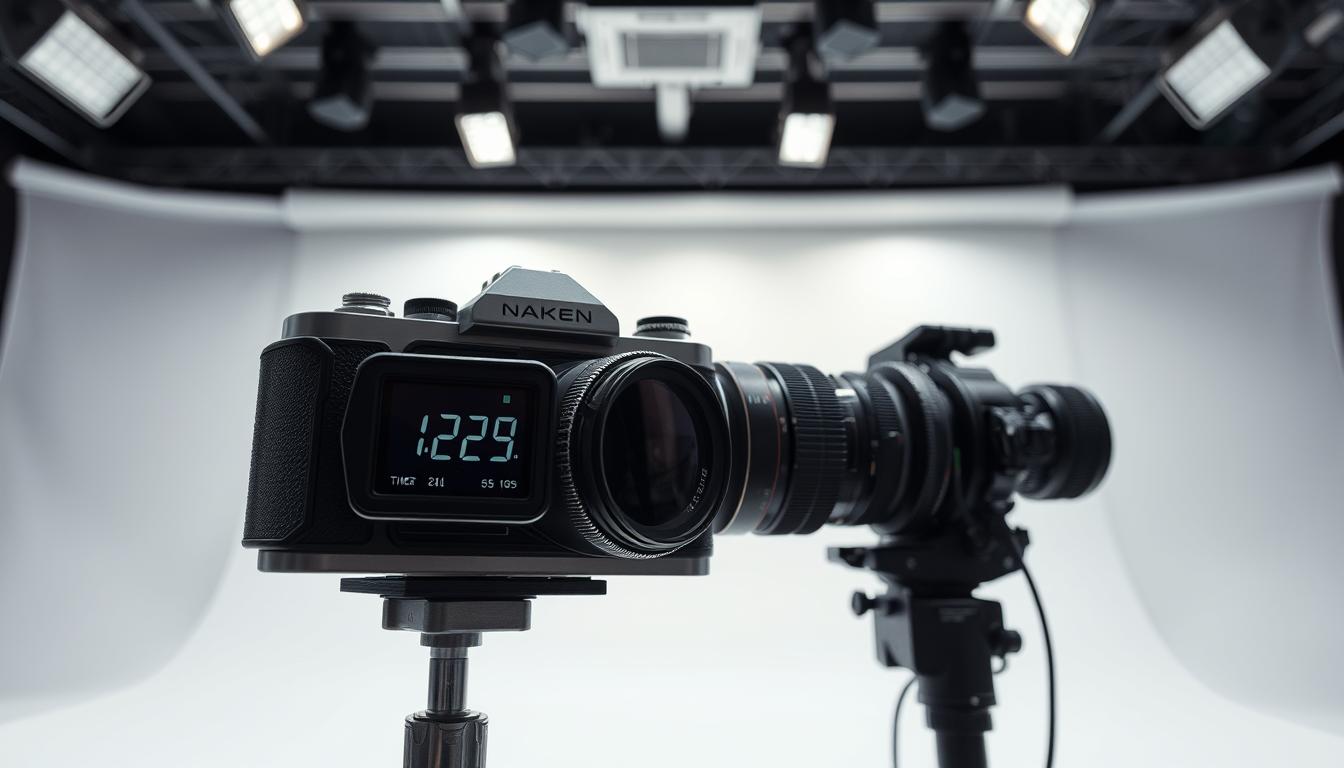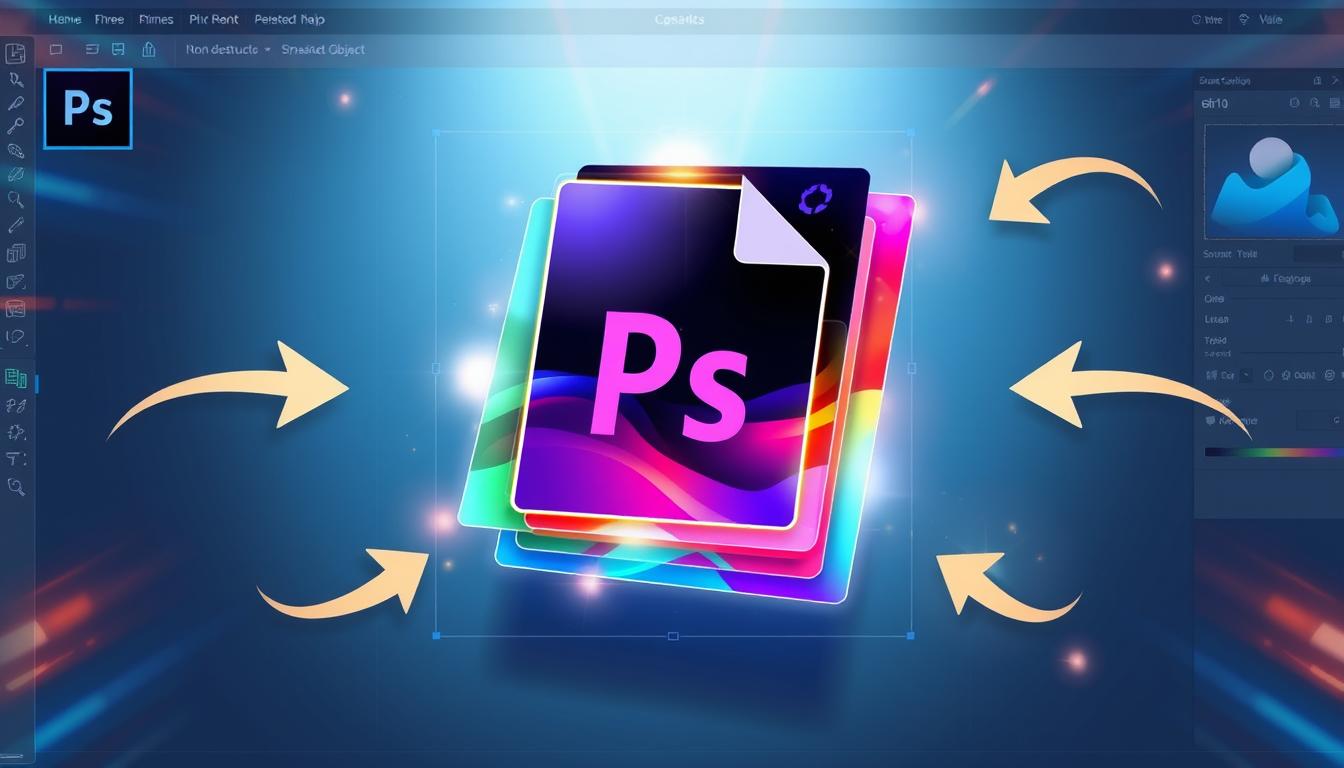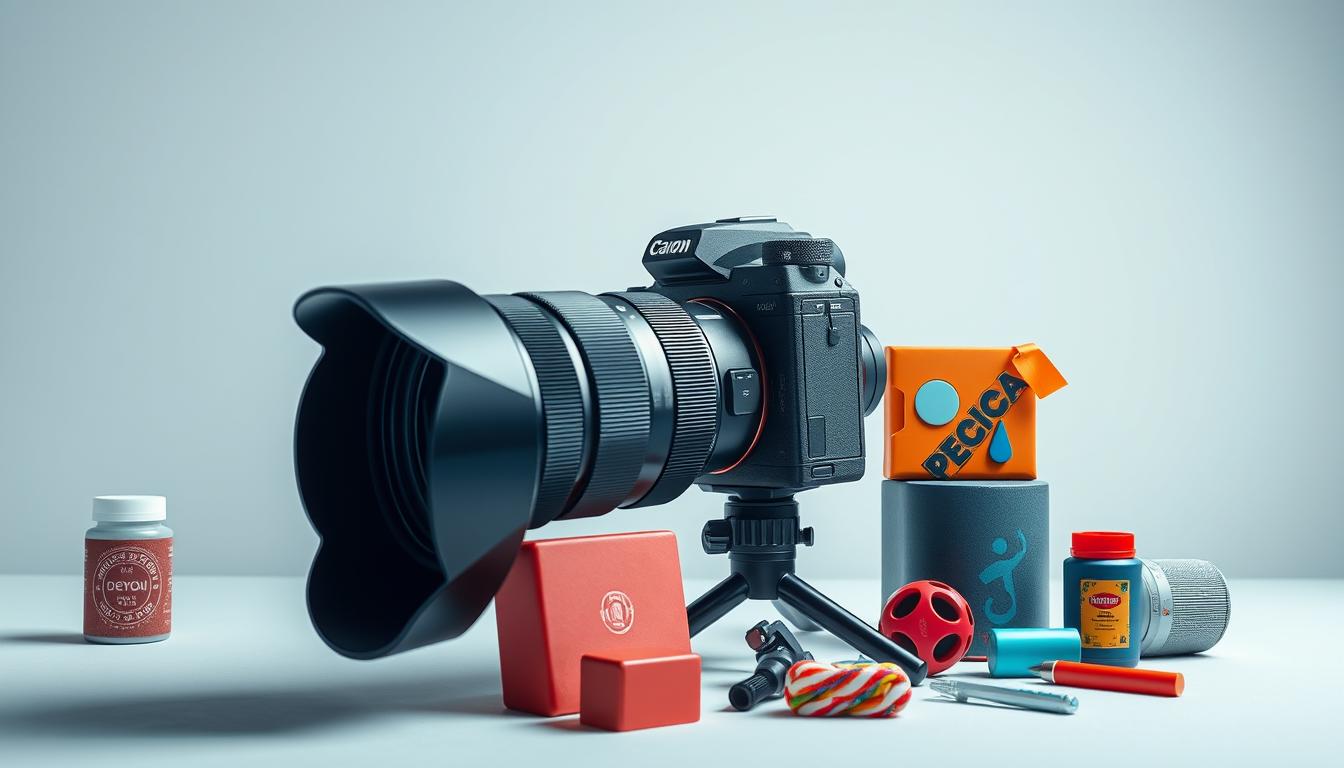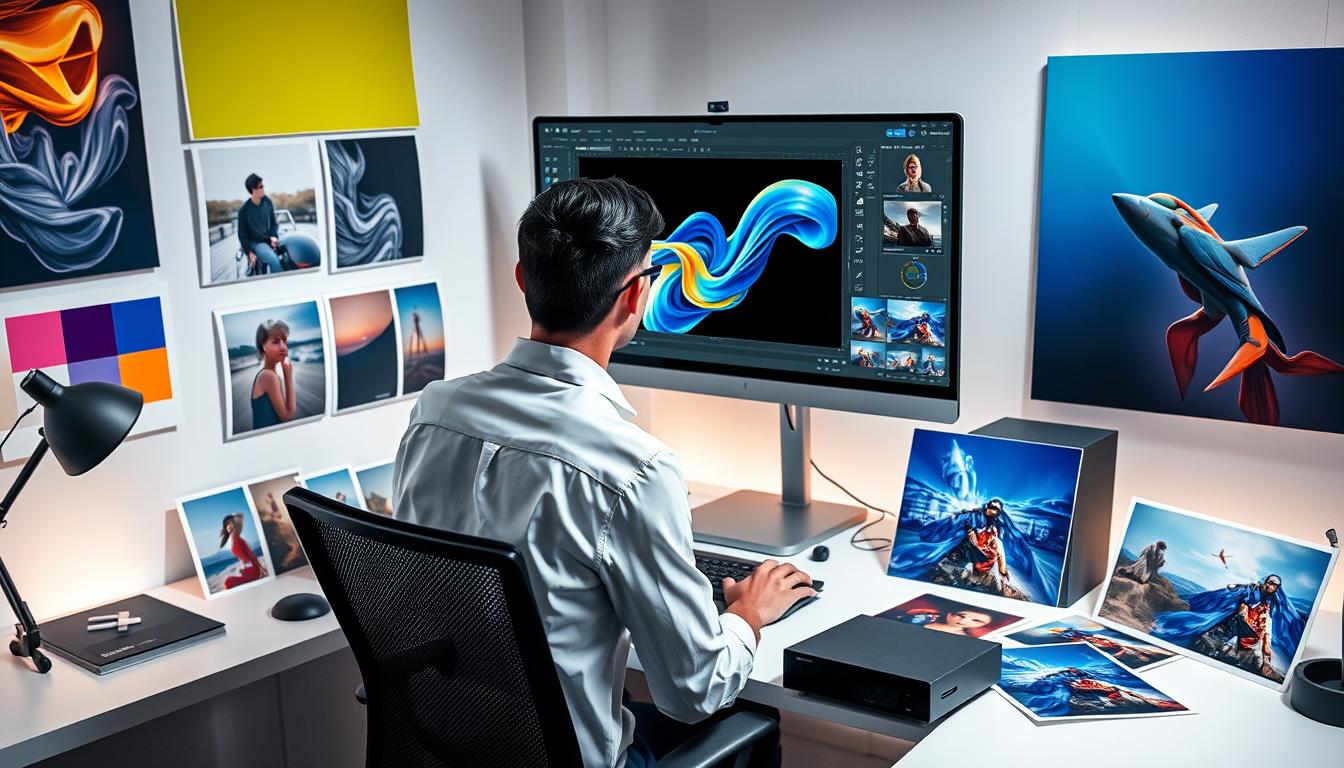To take amazing pictures, you need to know the fundamentals of photography. How quickly the shutter opens and closes is called the shutter speed. Seconds or fractions of a second are the units of measurement. To get the desired effect in your photos, you must be proficient with shutter speed.
Shutter speed is important in photography. A 0.5-second exposure can create a sense of motion by making moving subjects look blurred or stretched. Faster shutter speeds can freeze moments. This guide will dive into shutter speed and its role in photography.
Understanding Shutter Speed Basics
An important aspect of photography is the shutter speed, which indicates the duration of the shutter’s opening. Time is expressed in seconds or 1/second. A photo’s brightness is controlled by the amount of light that goes into the camera.
Knowing shutter speed is vital for great photos. It can completely transform the mood and style of the photo.
Shutter speed is linked to exposure in photography. A fast shutter speed lets in less light, while a slow shutter speed allows more light into the camera. This changes the photo’s brightness and darkness.
To get the hang of shutter speed, it helps to understand the numbers. It’s measured in fractions of a second—like 1/100 or 1/200. Slower speeds, such as 1/4 second, can blur movement, while faster ones like 1/1000 freeze the action.
Getting the hang of shutter speed can really level up your photography and help you capture more creative, dynamic shots. It lets you capture amazing images.
What is Shutter Speed?
Shutter speed is a key part of photography. It controls how much light gets in, affecting the photo’s brightness. Adjusting the shutter speed lets photographers create different effects—like freezing fast action or adding motion blur for a sense of movement.
Mathematics of Shutter Speed
Shutter speed math is simple. It’s in fractions of a second. The faster the shutter speed, the less light reaches the camera sensor. That’s why getting shutter speed right is such a key part of photography.
Impact on Exposure
Shutter speed plays a big role in exposure. A slower speed lets in more light, making the photo brighter, while a faster speed lets in less, making it darker. Understanding this helps photographers fine-tune their settings to get the exact look they’re going for. It’s a simple concept, but essential to great photography.
What's Half of 0.5 Second in Photography: Simple Breakdown
In photography techniques, knowing shutter speed is key. Half of 0.5 seconds is 0.25 seconds or 1/4 second. This shutter speed helps create motion or blur, adding creativity to your photography techniques.
To use this shutter speed, you’ll need to adjust your camera settings. A tripod can help keep your shot steady, especially at slower speeds. You may also need to fine-tune the aperture and ISO to get the right exposure. Understanding how these settings work together can really improve your photography skills.
Importance of Quarter-Second Exposures
Quarter-second exposures are key in photography. They let photographers capture unique and creative shots. By setting the camera for a quarter-second, they can make moving subjects look blurred and interesting.
This technique is great for showing movement, like in water or clouds. It adds energy and depth to photos. It’s also good for creating a mood or atmosphere in images.
Creative Applications
Quarter-second exposures are versatile. They can be used to show movement or create abstract effects. Here are some ways:
- Capturing the movement of water or clouds
- Creating a sense of blur and motion
- Adding depth and interest to images
Technical Benefits
Quarter-second exposures also have technical advantages. They include:
- Enabling photographers to create a sense of motion and blur
- Providing photographers with greater control over camera settings and exposure
Camera Settings for 1/4 Second Shots
To capture amazing shots with a 1/4 second exposure, you need to understand the right camera settings to use. When using shutter speed, think about how aperture, ISO, and shutter speed work together. Understanding these settings is vital for taking high-quality photos.
Begin by setting your shutter speed to 1/4 second to introduce motion blur in your photos. Next, adjust your aperture and ISO to balance the exposure. For instance, in bright conditions, use a smaller aperture to prevent the image from getting too bright.
Here are some important things to consider for camera settings with 1/4 second exposures:
Mastering camera settings and shutter speed opens up creative possibilities in your photography. Always try new things and practice often to get better and achieve great results.
Achieving Sharp Images at Slower Shutter Speeds
Working with slower shutter speeds requires the right techniques for sharp images. Camera settings play a big role in image quality. Adjusting these settings and using image stabilization can help reduce camera shake and blur.
Here are some tips for sharp images at slower shutter speeds:
- Use a tripod to stabilize the camera
- Enable image stabilization systems in lenses or camera bodies
- Practice hand-holding techniques, like holding the camera close and taking a deep breath before shooting
Tripod Techniques
A tripod is a top choice for sharp images at slower shutter speeds. It keeps the camera steady, avoiding shake and blur for sharper photos.
Image Stabilization Systems
Image stabilization systems in lenses or cameras also help. They use gyroscopes and sensors to detect and adjust for camera movement in real-time.
Hand-holding Methods
Without a tripod, hand-holding can still get sharp images. Proper techniques, like holding the camera close and breathing deeply before shooting, can reduce shake and blur.
By using these tips and techniques, photographers can get sharp images at slower shutter speeds. Try different camera settings and image stabilization systems to find what works best for you.
| Technique | Description |
|---|---|
| Tripod | Stabilizes the camera to avoid shake and blur |
| Image Stabilization | Uses gyroscopes and sensors to detect and adjust for camera movement |
| Hand-holding | Practices proper techniques, such as holding the camera close to the body, to minimize shake and blur |
Common Subjects for Quarter-Second Photography
Quarter-second exposures are great for capturing unique images. They work well for waterfalls, moving objects, and scenes in low light.
Using a quarter-second shutter speed adds motion to your photos. It’s perfect for capturing moving cars or animals. For instance, it can blur a car’s motion, showing its speed.
Quarter-second exposures also work for creative shots of waterfalls and other subjects. The slow shutter speed blurs water, showing its flow. This effect is even better with techniques like panning or zooming.
Other subjects for quarter-second photography include:
- Low-light scenes, such as cityscapes at night
- Moving water, such as waves or rivers
- Animals, such as birds in flight or running animals
Photographers can make unique images by trying different techniques and shutter speed settings. This way, they capture the beauty and motion of our world.
Light Conditions and Their Impact
Lighting is key in quarter-second photography. It affects the image’s exposure and quality. Knowing how to adjust to different lights is crucial for great photos.
Natural light, like during the golden hour or on overcast days, is ideal. It offers a soft, warm glow perfect for portraits and landscapes. Artificial lights, like studio lights or flash units, give more control. This allows for more creative freedom in your photos.
Natural Light Scenarios
- Golden hour: soft, warm light ideal for portraits and landscapes
- Overcast skies: diffused light perfect for capturing detailed textures and colors
Artificial Lighting Considerations
- Indoor studio lights: controlled lighting for precise photography techniques
- External flash units: added flexibility for capturing images in various lighting conditions
Mixed Lighting Situations
Mixed lighting, with both natural and artificial light, can create unique images. By learning to balance these lights, photographers can make stunning photos with great exposure.
Mastering different lighting conditions and techniques can elevate quarter-second photography. It allows for images with perfect exposure and emotional depth.
Avoiding Common Mistakes
Working with quarter-second exposures requires avoiding common photography mistakes. One big error is camera shake, which makes images blurry. To fix this, use a tripod or image stabilization. Also, adjust your camera settings correctly.
Another mistake is overexposure, which makes images too bright. To avoid this, focus on your photography techniques. Adjust your aperture and shutter speed as needed.
- Use a lower ISO to reduce noise and digital artifacts
- Adjust your white balance to match the lighting conditions
- Experiment with different camera settings to find the perfect combination for your shot
By avoiding these common photography mistakes, you can improve your photography techniques. This will help you capture stunning images with quarter-second exposures. Always check your camera settings and adjust them as needed for the best results.
Advanced Techniques for Quarter-Second Exposures
Photographers can discover many advanced techniques for quarter-second exposures. One technique is motion blur effects. This adds a dynamic feel to photos. By changing the shutter speed, they can blur images to show movement and energy.
Another technique is multiple exposure techniques. This involves combining several images into one. It can be done with special equipment or software. When done right, it creates unique and interesting photos that show a photographer’s creativity.
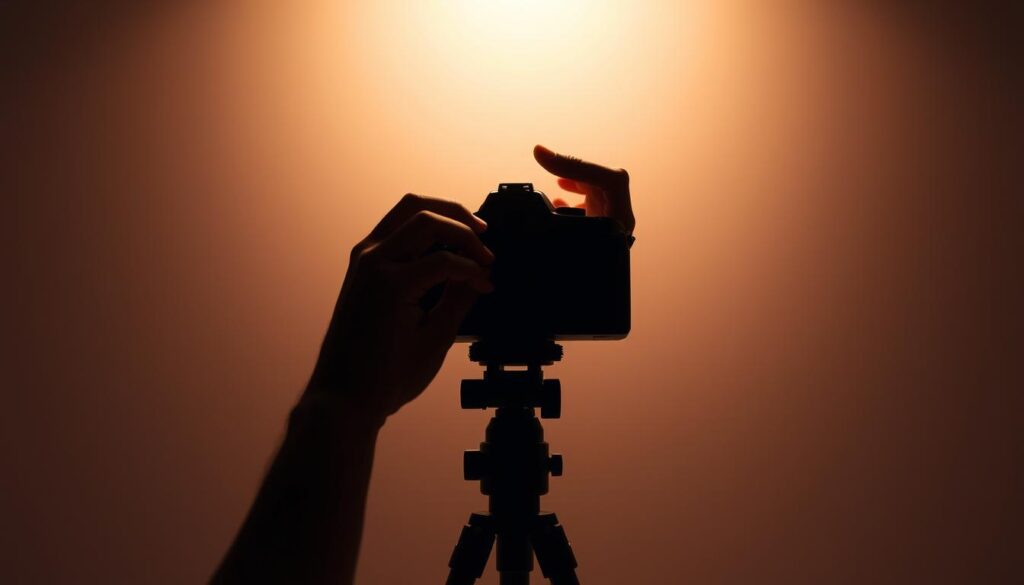
Light painting is another creative area for photographers. With a quarter-second exposure, they can capture light movement. This creates a sense of energy in their photos. To do this, they adjust shutter speed and aperture to control light.
Motion Blur Effects
- Adjusting shutter speed to convey movement and energy
- Using advanced photography equipment to achieve desired effects
Multiple Exposure Techniques
- Combining multiple images into a single frame
- Using post-processing software to achieve desired effects
- Experimenting with different techniques to create unique and captivating images
Light Painting Possibilities
- Using quarter-second exposures to capture movement of light sources
- Adjusting shutter speed and aperture to control amount of light
- Experimenting with different light sources and colors to add depth and interest
By learning these advanced techniques, photographers can improve their quarter-second exposures. They can make unique and captivating images. Whether using motion blur, multiple exposures, or light painting, they can explore new possibilities in photography.
Essential Equipment for Slower Shutter Speeds
For stunning images with slower shutter speeds, the right gear is key. A tripod is essential. It keeps your camera steady, leading to sharper photos and less shake.
Choosing the Right Tripod
Think about your camera’s weight and size, and your photography style. Choose a sturdy tripod with a smooth head. Brands like Manfrotto and Gitzo are popular.
Remote Triggers and Other Accessories
Remote triggers and other tools are also vital. They let you snap photos without touching the camera, reducing shake. Filters and lens cleaning kits can also improve your photos.
Some must-haves for slower shutter speeds are:
- Tripod: provides stability and support for the camera
- Remote triggers: allows for touchless photography and reduced camera shake
- Filters: enhances image quality and reduces glare
- Lens cleaning kits: keeps lenses clean and free of smudges
Investing in the right gear, like a tripod and remote triggers, will elevate your photography. You’ll capture amazing images with slower shutter speeds.
Post-Processing Tips for Quarter-Second Images
When working with post-processing quarter-second images, there are key factors to keep in mind. The aim of photography editing is to improve the image while keeping its natural feel. Adjusting the exposure is crucial, as these images can sometimes look too bright or too dark.
Understanding how shutter speed affects exposure is vital. A slower shutter speed makes images brighter, while a faster one makes them darker. By tweaking the exposure in post-processing, you can achieve a balanced and attractive image.
- Adjusting the contrast to add depth and dimension to the image
- Enhancing the color balance to create a more natural look
- Reducing noise and grain to produce a smoother image
By applying these tips and grasping the basics of photography editing, you can elevate your quarter-second images. This will help you create stunning, professional-looking photos.
Mastering these post-processing techniques and understanding the shutter speed and exposure relationship will unlock your quarter-second images’ full potential. This way, you can create truly stunning photos.
Conclusion
Exploring what’s half of 0.5 second in photography techniques shows us the vast potential of shutter speed. Understanding quarter-second exposures opens up a new world of photography basics. It lets photographers take stunning, dynamic pictures.
In this guide, we covered the technical side of shutter speed and its effects on exposure. We also looked at how slower shutter speeds can be used. From stopping motion to adding blur, the quarter-second range is very useful for all photographers.
Mastering quarter-second exposures is all about trying new things and exploring. With the right camera settings, techniques, and editing, you can improve your photos. You’ll capture magical moments in just a fraction of a second.
So, dive into quarter-second photography and see where it takes you. It’s a chance to push your creativity and make images that tell amazing stories. The possibilities are endless, and your journey is just starting.
FAQ
How does Shutter Speed affect Exposure?
Shutter speed greatly affects exposure. A quick shutter speed (like 1/1000 second) lets less light in, making images darker. A slower speed (like 1 second) lets more light in, making images brighter.
What is the Significance of Quarter-Second Exposures?
Quarter-second exposures are key in photography. They help capture motion blur and creative light effects. They also work well in low-light conditions, making for unique images.
How can I Achieve Sharp Images with Slower Shutter Speeds?
To get sharp images with slower speeds, use a tripod or image stabilization. Hand-holding techniques also work. These methods help reduce camera shake and blur, ensuring sharp images.
What Subjects are Best Suited for Quarter-Second Photography?
Quarter-second exposures are great for moving subjects like waterfalls. They’re also good for low-light scenes, capturing ambient light and atmosphere.
How does Lighting Affect Quarter-Second Exposures?
Lighting greatly impacts quarter-second exposures. Different lighting types need specific camera settings. Knowing how light affects your shots is key.
What Common Mistakes Should I Avoid with Quarter-Second Exposures?
Avoid camera shake, overexposure, and wrong focus with quarter-second exposures. Good camera support, exposure, and focus are crucial for quality images.
What Equipment is Necessary for Slower Shutter Speeds?
For slower shutter speeds, you need a tripod, remote triggers, and filters. The right gear helps achieve great results and handle longer exposures.
How can I Enhance Quarter-Second Images in Post-Processing?
Post-processing is vital for enhancing quarter-second images. Adjusting exposure, contrast, and color balance can refine the image. It brings out the unique qualities of slower shutter speeds.

